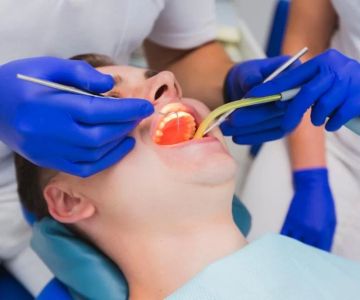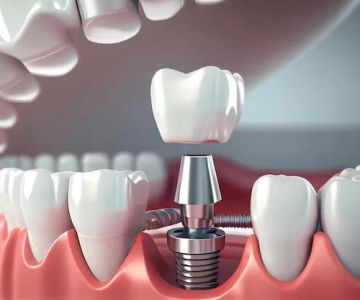
Teeth Restoration After Tooth Decay or Injury: Options and Treatments Explained
- Understanding Tooth Decay and Injury
- Why Teeth Restoration is Important
- Dental Restoration Options: From Fillings to Crowns
- Innovative Techniques for Teeth Restoration
- Real-Life Examples of Teeth Restoration Success
- Choosing the Right Teeth Restoration Treatment
1. Understanding Tooth Decay and Injury
Tooth decay and injury are two of the most common causes of dental damage. Tooth decay occurs when plaque builds up on the teeth and turns into acid that erodes the tooth enamel. This leads to cavities, which, if left untreated, can cause further damage and infection. On the other hand, tooth injuries can happen due to accidents, falls, or sports-related activities, causing fractures, cracks, or even complete tooth loss.
Both conditions not only affect the appearance of your smile but can also lead to more serious oral health issues, such as tooth infections or misalignments. Fortunately, modern dentistry offers a wide range of restoration options to repair damaged teeth and restore their functionality.
2. Why Teeth Restoration is Important
Teeth restoration after tooth decay or injury is crucial for maintaining both your dental health and aesthetic appearance. Untreated cavities or fractures can cause pain, difficulty chewing, and further damage to surrounding teeth. Additionally, compromised teeth can lead to more serious conditions, such as tooth abscesses or infections that could spread to other parts of your body.
Beyond the health concerns, restoring teeth also helps boost confidence. A restored tooth, whether through fillings, crowns, or implants, will allow you to smile with ease and avoid the self-consciousness that comes with visible damage. It's essential to address tooth decay or injury promptly to prevent these potential complications.
3. Dental Restoration Options: From Fillings to Crowns
When it comes to teeth restoration, there are several options available depending on the extent of the damage and your specific needs:
- Fillings: For cavities caused by tooth decay, dental fillings are the most common restoration treatment. Materials like amalgam, composite resin, and gold are used to fill the cavity, restore the tooth's shape, and prevent further decay.
- Crowns: If the tooth has been severely damaged or has a large filling, a crown may be the best solution. Crowns are custom-made to cover the entire tooth, restoring both function and appearance. They can be made from materials like porcelain, ceramic, or metal alloys.
- Veneers: For teeth that have become discolored or have minor fractures, veneers provide a cosmetic solution. Thin layers of porcelain are bonded to the front of the tooth to enhance its appearance, creating a natural-looking and durable result.
- Dental Implants: In cases where a tooth is completely lost or cannot be saved, dental implants are a long-term solution. An implant consists of a titanium post that is surgically placed into the jawbone, followed by a crown to replace the missing tooth.
4. Innovative Techniques for Teeth Restoration
Thanks to advances in dental technology, there are now even more efficient and comfortable ways to restore damaged teeth. Some of the most innovative techniques include:
- CEREC Technology: CEREC (Chairside Economical Restoration of Esthetic Ceramics) is a revolutionary technology that allows dentists to create custom crowns, veneers, and fillings in just one visit. The process uses 3D imaging to design the restoration, which is then milled from a ceramic block and placed directly in the patient’s mouth, saving both time and discomfort.
- Laser Dentistry: Lasers are now used in various aspects of dental restoration, including cavity preparation and gum reshaping. Laser technology reduces the need for traditional drilling, making the procedure faster and less invasive.
- Digital Impressions: Traditional molds can be uncomfortable, but with digital impressions, dentists can capture highly accurate 3D images of your teeth without the need for messy impressions. This makes the restoration process more precise and comfortable.
5. Real-Life Examples of Teeth Restoration Success
Many patients have successfully restored their teeth after experiencing decay or injury, thanks to modern dental treatments. One such example is a patient named Sarah, who suffered a severe tooth fracture after a car accident. She was initially concerned about the long-term effects on her smile, but after consulting with a dentist, she opted for a dental implant to replace the damaged tooth. The result was a seamless and natural-looking smile that improved her confidence and restored her chewing ability.
Another example is John, who had multiple cavities due to years of neglecting his oral health. After undergoing treatment with composite resin fillings and porcelain crowns, he was able to restore the full functionality and appearance of his teeth, eliminating the pain and discomfort he had previously endured.
6. Choosing the Right Teeth Restoration Treatment
Choosing the right teeth restoration treatment depends on various factors, such as the extent of the damage, your oral health, and your cosmetic preferences. It’s important to consult with a qualified dentist to discuss your options and determine the most suitable treatment for your needs. Factors like durability, appearance, and cost should also be considered when making your decision.
If you're dealing with tooth decay or injury, don't delay seeking treatment. The sooner you restore your teeth, the better the long-term results. Visit Dentistry Toothtruth for more information on dental restoration options and to book a consultation with one of our expert dentists.







 Alliance Orthodontics4.0 (23 review)
Alliance Orthodontics4.0 (23 review) Growing Smiles of Voorhees4.0 (2464 review)
Growing Smiles of Voorhees4.0 (2464 review) Dr. David Miller DDS5.0 (1 review)
Dr. David Miller DDS5.0 (1 review) Michael C. Byars, DDS5.0 (67 review)
Michael C. Byars, DDS5.0 (67 review) West Loop Dental Associates4.0 (24 review)
West Loop Dental Associates4.0 (24 review) David A. Goodman, DMD Alan C. Ko, DMD Advanced Cosmetic & Prosthetic Dentistry5.0 (333 review)
David A. Goodman, DMD Alan C. Ko, DMD Advanced Cosmetic & Prosthetic Dentistry5.0 (333 review) The Importance of Oral Health Education During Pregnancy for a Healthy Pregnancy
The Importance of Oral Health Education During Pregnancy for a Healthy Pregnancy Best Tips for Brushing Your Teeth Properly for Healthy Gums: Essential Techniques for Oral Health
Best Tips for Brushing Your Teeth Properly for Healthy Gums: Essential Techniques for Oral Health Why Skipping Dental Checkups Can Lead to Bigger Oral Health Problems
Why Skipping Dental Checkups Can Lead to Bigger Oral Health Problems Advantages of Porcelain Dental Restorations
Advantages of Porcelain Dental Restorations How Can Diabetes Cause Tooth and Gum Problems? Preventing and Managing Oral Health Issues
How Can Diabetes Cause Tooth and Gum Problems? Preventing and Managing Oral Health Issues Healthy Habits for Promoting Good Oral Health and Hygiene: Tips for a Healthy Smile
Healthy Habits for Promoting Good Oral Health and Hygiene: Tips for a Healthy Smile